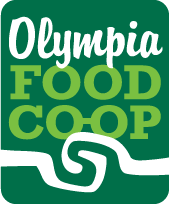
DEVELOP A PLAN
GET SMART— Making a plan for your garden before it gets going allows you to get the most out of it. For guidance, I recommend strongly that you get the following two publications: Martime Northwest Garden Guide (produced by Seattle Tilth and available for sale at both Co-ops) and Home Vegetable Growing in Washington (produced by Washington State University). I also encourage you to register for the Co-op’s Garden Center’s Garden Planning Workshop on February 3, 2018.
DRAW A MAP— You can get your plan going by drawing a map of your site. Make sure to include the size of your plots, their orientation, what was last planted in them and anything near them that may impact the light and heat they get like trees or concrete. You should also make a list of what you want to plant. Save yourself money and hardship by choosing plants that you actually want to eat, that your garden has adequate light, heat, and irrigation to support, and that you have the time and skills to successfully care for.
WHERE TO PLANT— Once you’ve got your map and your list, you can decide when and where to plant things. Use a planting guide from one of the resources I mentioned above for planning timing. In deciding where to plant things, take into account the space a plant will take up and how much heat and light it needs. Also, think about trying to rotate crops- especially if you grow heavy feeders like tomatoes or have soil diseases present on your site.
PREPARE YOUR SITE
BE PATIENT—Trying to work soil while it is still very wet can seriously damage soil. Lots of people have a hard time waiting until their soils are properly dry (which can be as late as May some years), but it really isn’t worth it. I tilled in early March once and the soil turned into impenetrable clods of clay. You can make the waiting easier on yourself by using plastic or glass propped up over your garden beds (air circulation is important!) to keep the rain off your garden beds.
I’ve made absurdly simple set ups involving sawed-in-half hula hoops with old shower curtains zip-tied over the tops of them, but you can also order hoop houses if you’re feeling fancy…..[READ MORE]



